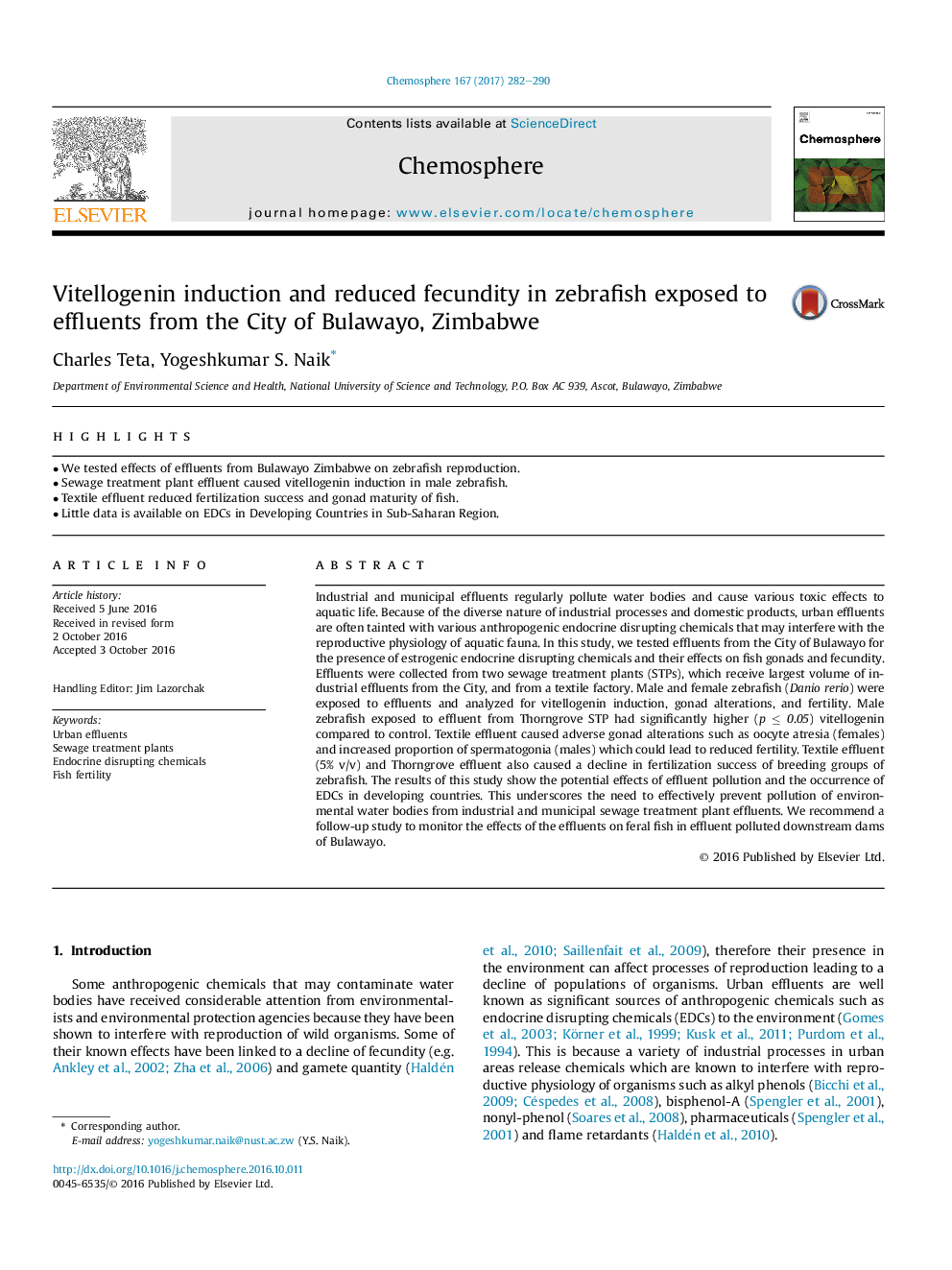| Article ID | Journal | Published Year | Pages | File Type |
|---|---|---|---|---|
| 6305936 | Chemosphere | 2017 | 9 Pages |
Abstract
Industrial and municipal effluents regularly pollute water bodies and cause various toxic effects to aquatic life. Because of the diverse nature of industrial processes and domestic products, urban effluents are often tainted with various anthropogenic endocrine disrupting chemicals that may interfere with the reproductive physiology of aquatic fauna. In this study, we tested effluents from the City of Bulawayo for the presence of estrogenic endocrine disrupting chemicals and their effects on fish gonads and fecundity. Effluents were collected from two sewage treatment plants (STPs), which receive largest volume of industrial effluents from the City, and from a textile factory. Male and female zebrafish (Danio rerio) were exposed to effluents and analyzed for vitellogenin induction, gonad alterations, and fertility. Male zebrafish exposed to effluent from Thorngrove STP had significantly higher (p â¤Â 0.05) vitellogenin compared to control. Textile effluent caused adverse gonad alterations such as oocyte atresia (females) and increased proportion of spermatogonia (males) which could lead to reduced fertility. Textile effluent (5% v/v) and Thorngrove effluent also caused a decline in fertilization success of breeding groups of zebrafish. The results of this study show the potential effects of effluent pollution and the occurrence of EDCs in developing countries. This underscores the need to effectively prevent pollution of environmental water bodies from industrial and municipal sewage treatment plant effluents. We recommend a follow-up study to monitor the effects of the effluents on feral fish in effluent polluted downstream dams of Bulawayo.
Related Topics
Life Sciences
Environmental Science
Environmental Chemistry
Authors
Charles Teta, Yogeshkumar S. Naik,
